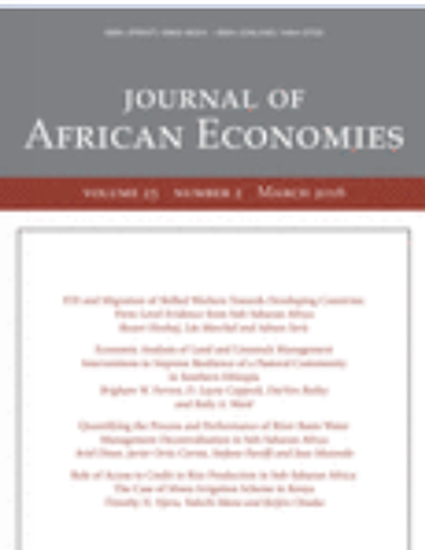
Article
Economic Analysis of Land and Livestock Management Interventions to Improve Resilience of a Pastoral Community in Southern Ethiopia
Journal of African Economies
(2016)
Abstract
A linear programming (LP) analysis is presented of land and livestock management interventions that could increase the economic resilience of a cattle-based pastoral community in the Harweyu Pastoral Association, located in the north-central region of the Borana Plateau of southern Ethiopia. As a result of decades of overgrazing and lack of fire, encroachment by invasive, noxious woody shrubs and trees has markedly reduced the grass production upon which grazing cattle rely. More frequent and severe droughts and reduced grazing productivity, coupled with an increasing human population, have resulted in food aid becoming pervasive in the system. This suggests that the pastoral population has become less resilient over time. We examine the effects of altering the mix of the larger livestock species (introducing more browsing camels relative to grazing cattle), clearing stands of woody plants to promote grass production and expanding the use of traditional deferred grazing practices (kalo) to allow more grass forage to be available in the long dry season, which constitutes another resource bottleneck in the system. Results suggest that clearing the woody plants on a large scale (33% of the Harweyu landscape) would have the most positive impact on the ability of people to promote cattle production and could reduce dependence on food aid by almost one-third.
Disciplines
Publication Date
2016
DOI
https://doi.org/10.1093/jae/ejv021
Citation Information
Forrest, Brigham W., et al. "Economic Analysis of Land and Livestock Management Interventions to Improve Resilience of a Pastoral Community in Southern Ethiopia." Journal of African Economies 25.2 (2015): 233-266.
